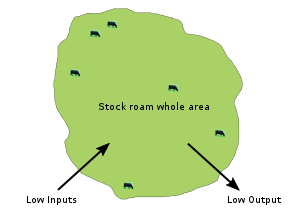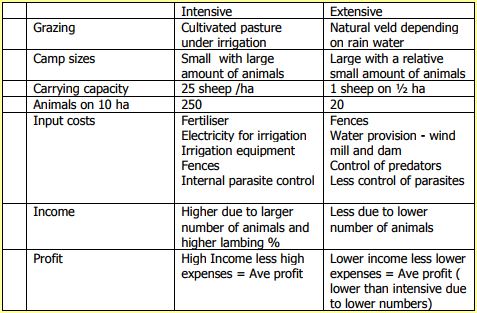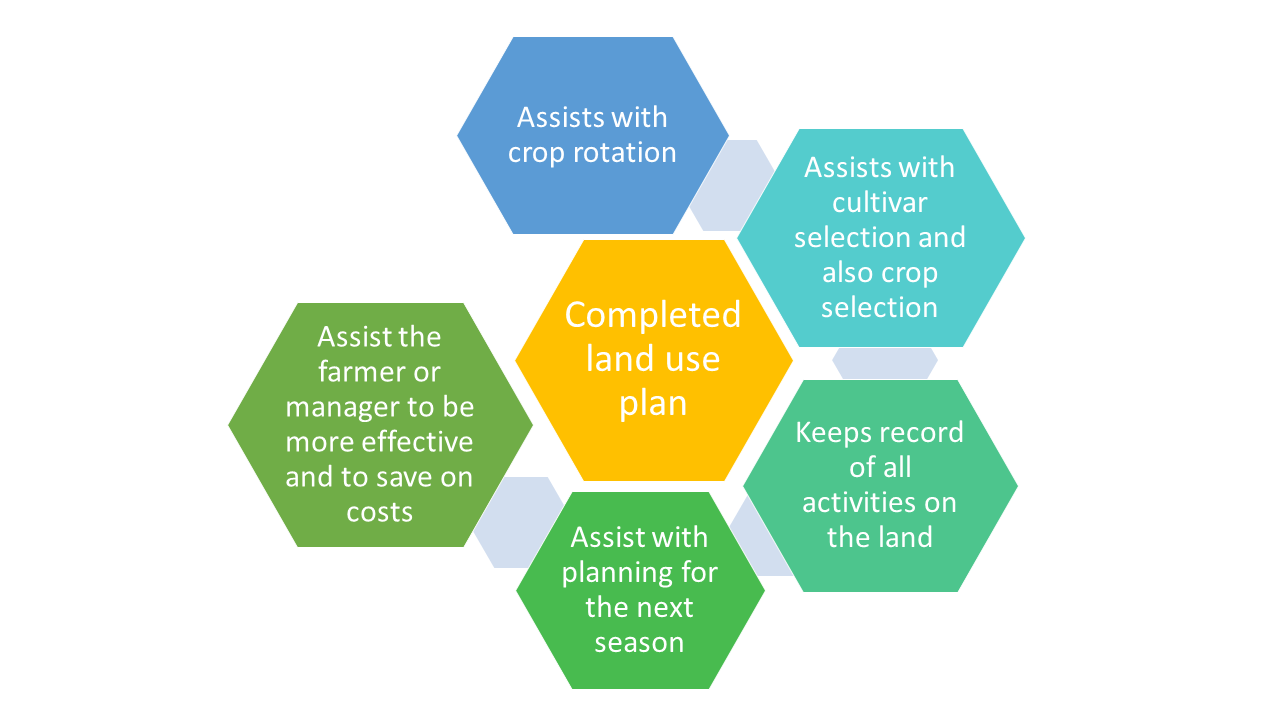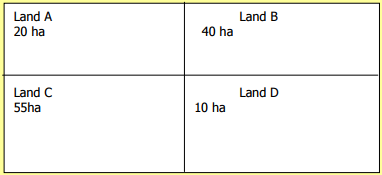Land-use Options Intensive and Extensive
Intensive farming produces large quantities of food or products from a small piece of land, but need much more inputs such as water, fertiliser, facilities and management; e.g. producing vegetables in tunnels or net houses, dairy farming, piggery and feedlots. A small piece of land is thus used to achieve maximum production. Extensive farming produces products over a large area e.g. beef cattle, sheep farming or game farming where animals are kept on natural grazing at the determining carrying capacity. Fewer inputs are needed, but so will the income also be. The following example can be used to explain the concept:


Land Use Plan

A land-use plan is part of the production planning that must be made either for a short term (1 year) or for a long term (5 years). The farmer, with the aid of service providers or the extension officer of the DoA, can compile the land use plan.
The following information must be included in the land use plan:
General Information - Where the area is situated, the name and registration no of the farm
Physical information - the size of the land, history of previous crops, soil detail record of cultivation and treatments
Crop rotation to prevent the building up of diseases – planning how this can be implemented
Seed and cultivars to be planted – to keep records and to determine the best cultivars for the specific area
Different crops need different nutrients and should complement each other – fertiliser needed
Nutritional and organic material status of the soil –obtained from soil analysis and if it is done on a yearly basis the nutritional situation in the soil can be monitored.
Water and wind erosion – How it can be prevented and if it is present, how can the area be rehabilitated
Economic factors such as the price of crops - supply and demand will be needed to decide which crop can be produced
Input costs – what is the cost of cultivation - how can the costs be reduced etc.
Record keeping - records must be kept assisting with the decision-making process.
What kind of data is found in a land-use plan? The land-use plan will contain:
- climatic or weather data
- production data
- financial data
- present and historic data
Why is a land-use plan so important in farm planning and farm layout? The land-use plan assists the farmer or manager with:
- The planning and budgeting - inputs that will be needed in the production process.
- Estimation of the income
- Record activities that took place - now the farmer can see what or when the different activities must be repeated
- Planning - the correct cultivars and quantity of fertiliser.
Click here to download an example of a land-use plan.
The completed land use plan is a source document for the production planning for the next season:

The farmer, his manager and other advisors can use the land-use plan to obtain the correct information to ensure that the production process is aimed at achieving the highest yield and the best quality products at the lowest cost.


The land-use plan assists the farmer in:
- Planning for cultivation
- Planning for production inputs –budget
- Planning income